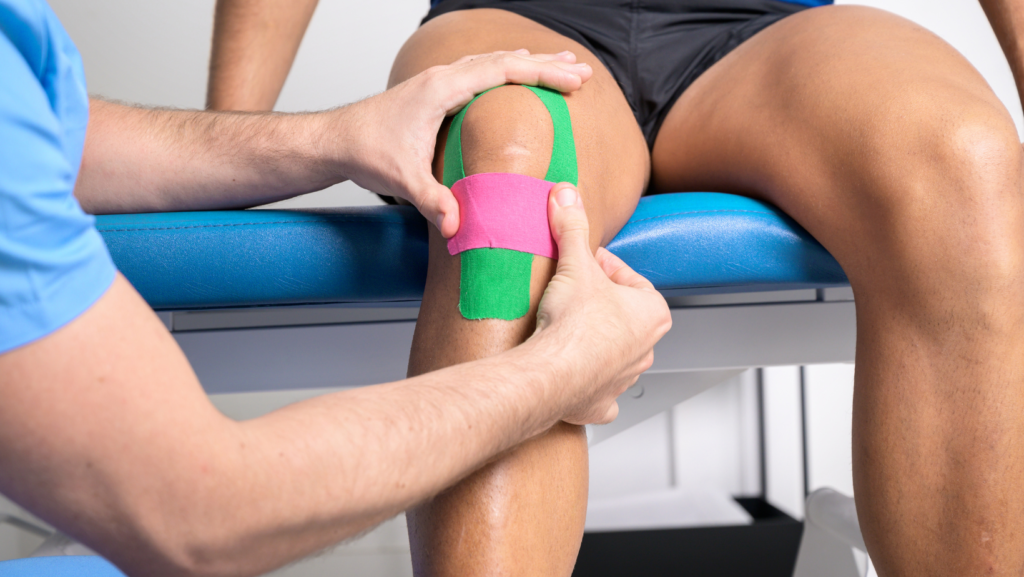Game-Changing Recovery: Injury Rehabilitation in Pensacola
Certain accidents injure muscles, bones, and other human body parts. These injuries are healed through Chiropractic, Decompression, Shockwave, and Physical Therapy at Injury Helpline Florida. These therapies use fewer medicines and more exercise and diet. These therapies help patients recover from big and small injuries. However, there are many risks of these therapies going wrong or issues occurring for the patients. So, these therapies are recommended to be done by professionals. There are many benefits of these therapies as well. If patients are dedicated to these therapies, then they can be recovered properly in a shorter time.

Understanding Chiropractic, Decompression, Shockwave, and Physical Therapy
Chiropractic
Chiropractic is a medical assistance profession that focuses on diagnosing and treating musculoskeletal disorders, primarily those related to the spine. Chiropractors use manual adjustments and manipulations to correct misalignments in the spine and promote overall well-being. This treatment is also available at Injury Helpline Florida.
Decompression Therapy
Decompression therapy is a non-penetrating treatment used to alleviate pain and discomfort in the spine, particularly for conditions like herniated discs or sciatica. It involves expanding the spine using a traction table or device to relieve pressure on spinal discs and nerves.
Shockwave Therapy
Shockwave therapy, or extracorporeal shock wave therapy (ESWT), is a medical treatment that uses high-energy shockwaves to stimulate the body’s natural healing processes. It is often used for musculoskeletal conditions, such as tendonitis or plantar fasciitis, to reduce pain and promote tissue repair.
Physical Therapy
Physical therapy is a medical assistance profession focused on restoring and improving physical function and mobility. Physical therapists make use of a range of techniques, including exercise, manual therapy, and modalities like ultrasound, to help individuals recover from injuries, surgeries, or medical conditions.
Why is Physical Therapy Important?
Physical therapy is important for several reasons:
- Rehabilitation: Physical therapy performs an important role in helping individuals recover from injuries, surgeries, or medical conditions. It focuses on improving physical function, mobility, and strength, which are essential for regaining independence and quality of life.
- Pain Management: Physical therapists use various techniques to manage and reduce pain. Pain management can include manual therapies, exercises, and modalities like heat or cold therapy, which help relieve discomfort and improve overall well-being.
- Prevention: Physical therapists can identify and address essential problems that may take to injuries or chronic conditions. Through exercise programs and education, they can help individuals prevent future problems and maintain good physical health.
- Improved Mobility: For individuals with mobility limitations, physical therapy can enhance movement, balance, and coordination. Improved mobility is particularly valuable for older adults or those with conditions like stroke or arthritis.
- Customized Care: Physical therapy is tailored to each individual’s needs. Therapists assess a person’s specific condition and create personalized treatment plans, ensuring that the care provided is highly targeted and effective.
- Avoiding Surgery: In some instances, physical therapy can help individuals avoid the need for surgery or delay it until other treatment options have been exhausted.
- Enhancing Sports Performance: Athletes often use physical therapy to recover from injuries and increase their athletic performance. Therapists work on strength, flexibility, and conditioning to optimize an athlete’s abilities.
- Holistic Approach: Physical therapy takes a holistic approach to healthcare, considering not just the physical aspect but also the mental and emotional well-being of individuals.
- Long-term Health: Regular physical therapy can contribute to long-term health and well-being, helping individuals maintain an active and independent lifestyle as they age.
What does Rehabilitation refer to?
Rehabilitation is a structured and multidisciplinary approach to helping individuals recover and regain their physical, psychological, and social functioning after an injury, illness, surgery, or other health-related setback. It aims to improve a person’s quality of life and restore their independence and overall well-being.
Rehabilitation can encompass various components, including physical therapy, occupational therapy, speech therapy, and psychological support. The specific focus and methods of Rehabilitation depend on the individual’s condition or injury, and the goal is to enhance their ability to perform everyday activities, manage pain, and adapt to any limitations they may have. Rehabilitation can be crucial for individuals recovering from surgeries, strokes, traumatic injuries, chronic illnesses, and a wide range of other health issues.
The Components of Rehabilitation
Rehabilitation typically consist of several components:
- Assessment: The first step is to assess the patient’s condition, needs, and goals. Assessment often involves medical evaluations, functional assessments, and goal-setting.
- Treatment Plan: Based on the evaluation, a personalized treatment plan is developed. This plan outlines the specific therapies and interventions needed.
- Physical Therapy: This component focuses on improving physical function and mobility through exercises, stretches, and manual therapies.
- Occupational Therapy: Occupational therapists help individuals regain the skills needed for daily activities and work-related tasks.
- Speech Therapy: For individuals with speech, language, or communication impairments, speech therapy is essential.
- Psychological Support: Emotional and psychological well-being are addressed through counseling, support groups, and mental health services.
- Medication Management: If necessary, medication is prescribed and managed to address pain, inflammation, or other medical issues.
- Assistive Devices: Rehabilitation may involve the use of assistive devices such as wheelchairs, prosthetics, or adaptive tools.
- Education: Patients and their families receive education about their condition, how to manage it, and prevent future injuries.
- Lifestyle and Wellness: Promoting a healthy lifestyle through nutrition, exercise, and stress management is often part of Rehabilitation.
Advantages of Rehabilitation
Rehabilitation is a versatile approach that mitigates the impact of a wide spectrum of health conditions, be they acute or chronic diseases, illnesses, or injuries. It acts synergistically with medical and surgical interventions, promoting faster recovery and optimizing outcomes.
Furthermore, Rehabilitation plays a preventive role, reducing the likelihood of complications in cases like spinal cord injuries, strokes, or fractures. In the context of chronic health conditions such as cardiovascular disease, cancer, and diabetes, it helps to minimize or decelerate disability by empowering individuals with self-management strategies, providing necessary assistive products, and addressing issues like pain. This comprehensive approach contributes to healthy aging and improved overall well-being.
Conclusion
The specific need for physical therapy varies from person to person, and it’s often prescribed by healthcare professionals to address individual health and mobility challenges. The specific components of Rehabilitation can vary depending on the type of injury or condition being treated and the individual’s needs at Injury Helpline Florida.


